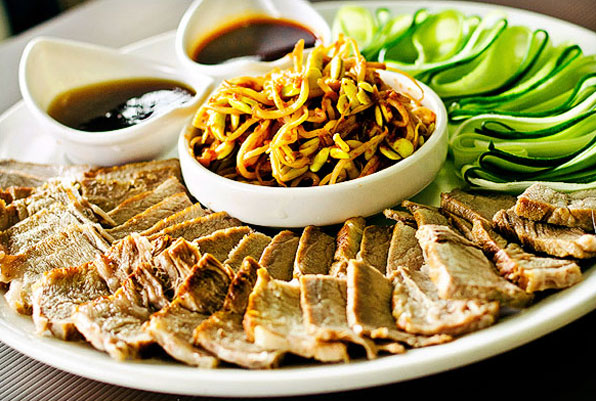
Korean cuisine has evolved through a complex interaction of the natural environment and different cultural trends.Korean cuisine is largely based on rice, vegetables, and meats. Kimchi is almost always served at every meal.
During the pre-modern era, grains such as barley and millet were the main staples and were supplemented by wheat, sorghum, and buckwheat. Rice is not an indigenous crop to Korea, and millet was likely the preferred grain before rice was cultivated.
Korean cuisine uses a wide variety of vegetables, which are often served uncooked, either in salads or pickles, as well as cooked in various stews, stir-fried dishes, and other hot dishes.Commonly used vegetables include Korean radish, napa cabbage, cucumber, potato, sweet potato, spinach, bean sprouts, scallions, garlic, chili peppers, seaweed, zucchini, mushrooms and lotus root.
Soups are a common part of any Korean meal. Unlike other cultures, in Korean culture, soup is served as part of the main course rather than at the beginning or the end of the meal, as an accompaniment to rice along with other banchan. Soups known as guk are often made with meats, shellfish and vegetables. Soups can be made into more formal soups known as tang, often served as the main dish of the meal.